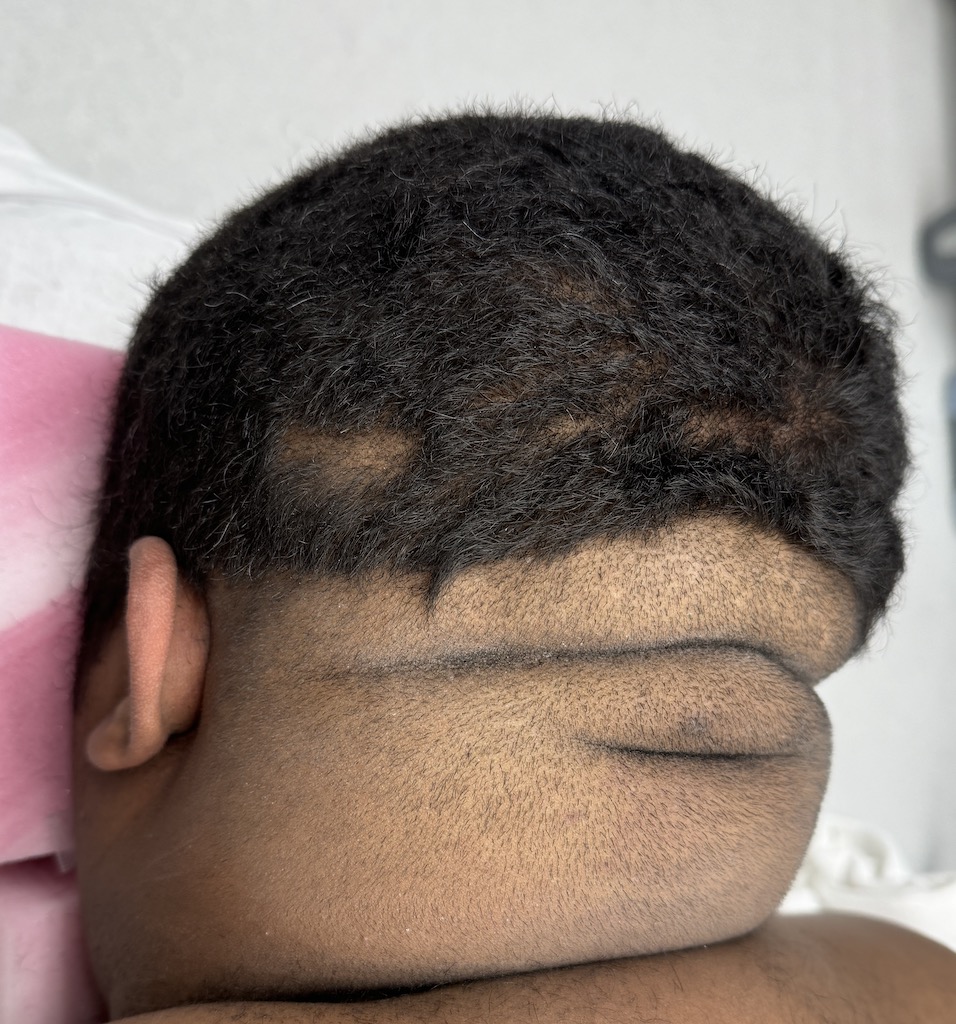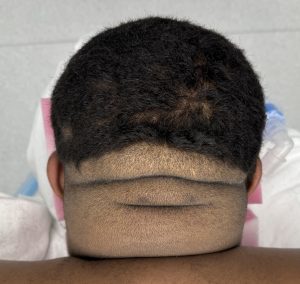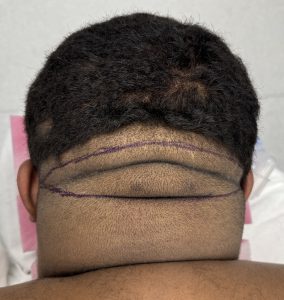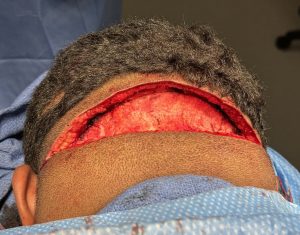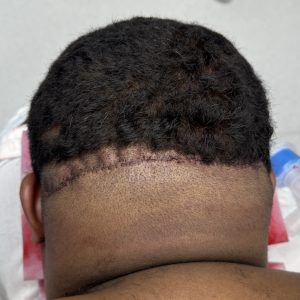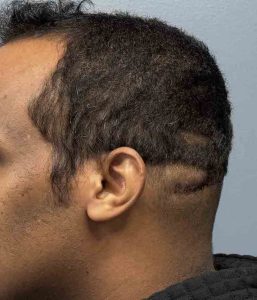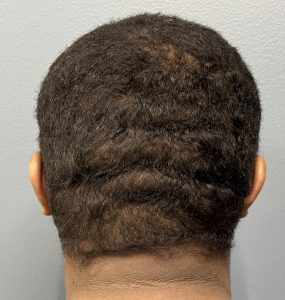Background: Significant or what has been called massive weight loss is any amount over 75lbs. Such amounts of weight loss are known to result in the creation of loose skin due to expansion which almost never contracts back to its original amount and tightness. These post weight loss skin effects vary across the body with the most recognizable being around the waistline, chest, and extremities. But there are also known effects in the head and neck region of which loose face and neck tissues are treated by facelift surgery.
A lesser known effect of large amounts of weight loss is the creation of excess or loose scalp tissues. This usually is most evident at the back of the head where the scalp meets the neck skin. The bottom of the occipital bone serves as a soft tissue stop and the rolls accumulate at this level. There can be one, two for rarely even a triple scalp roll appearance. Deep fixed horizontal indentations appear above and below each roll.
The only effective treatment for scalp rolls is excision. They must be cut out in their entirety for an effective flattening of the contour of the back of the head. This is done through a horizontal elliptical excision whose vertical size at the center of the ellipse is the width of the scalp roll(s) to be removed. In some cases the underlying nuchal ridge at the bottom of the occipital bone must be removed as well but this will be evident once the bone area is exposed after the scalp rolls are removed. The tradeoff for scalp roll excisions is the obvious fine line horizontal scar whose length from side to side is determined by the number of rolls removed and their horizontal length and thickness.
Case Study: This male had undergone an over 100lb weight after a gastric sleeve procedure. He developed two very visible scalp rolls one the back of his head that he did not have before. With his hair the scalp rolls were somewhat camouflaged but he desired to wear his hair shorter.
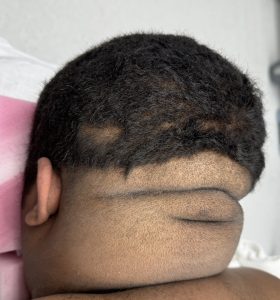

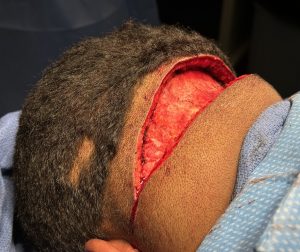
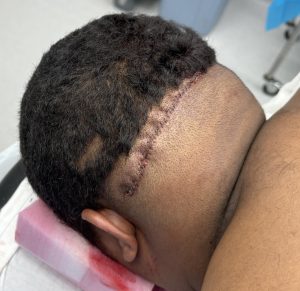
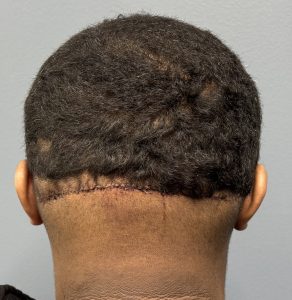
Think of scalp roll excision a bit like a tummy tuck. It is essentially a tradeoff of loose overhanging skin for that of a flatter contour with a scar. The difference of course is that a scar across the back of the head is more visible than that of the lower abdomen. It is a classic example of in aesthetic surgery it is fundamentally all about trading off one problem for another…you just have to make sure vyou like the new problem (scar) better the problem that is being removed. (scalp rolls) That answer would be highly iufliuenced by how well the scar turns out. But rather than assuming a great scar will result the better question is would you still make the tradeoff of a scar that was less than ideal or required a scar revision later for optimal appearance. That is the question should answer when considering scalp roll excision.
Key Points:
1) Significant weight loss causes loose skin all over the body including the scalp.
2) Redundant loose scalp manifests most significantly on the back of the head at the junction with the neck.
3) Excision of redundant single or double scalp rolls must be done in totality for a smooth contour to be achieved with the tradeoff of a long scalp scar.
Dr. Barry Eppley
World-Renowned Plastic Surgeon

